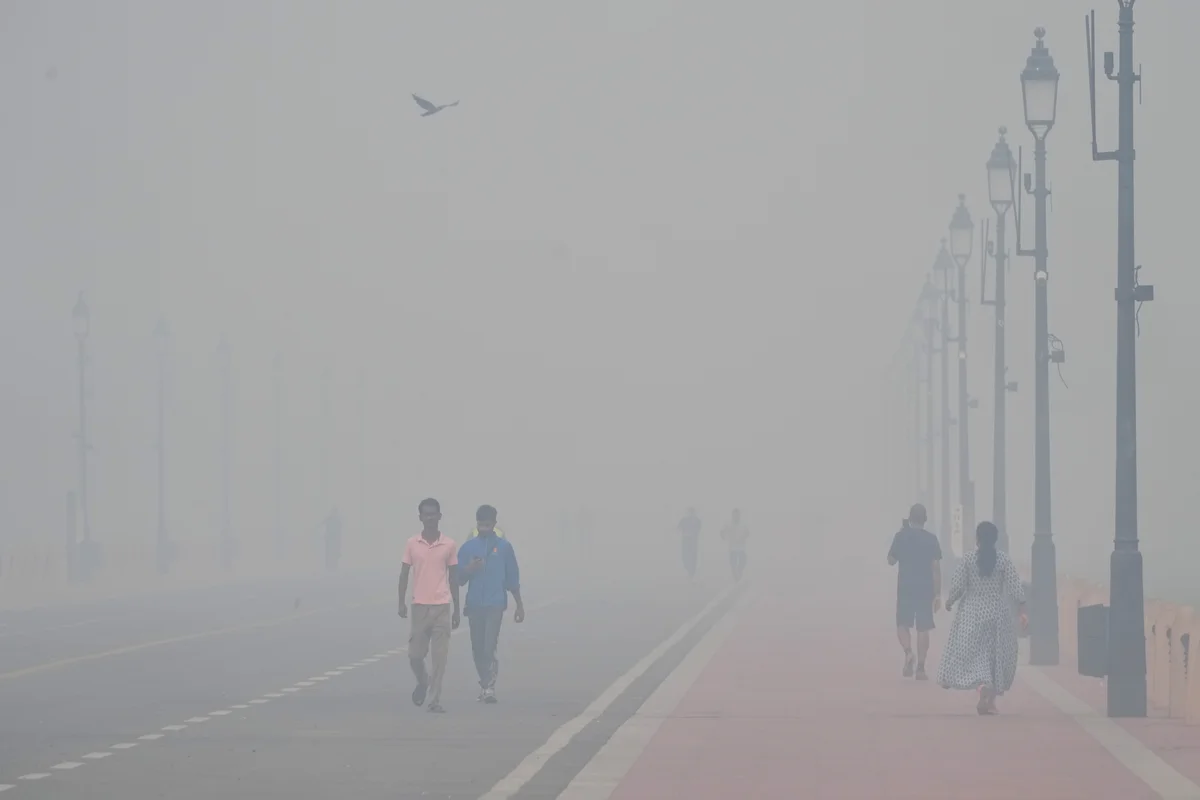Copyright independent

Air quality in Delhi collapsed into the “hazardous” range on Tuesday morning as smoke from Diwali fireworks blanketed the Indian capital, pushing air-quality readings above 1,000 at several monitoring stations. The Hindu festival of Diwali was celebrated across India on Monday by lighting lamps, including a world-record display in the northern city of Ayodhya, and heavy fireworks. Fine particles released from the fireworks mixed with seasonal pollution and stagnant weather conditions to send air quality plummeting across much of the country. According to IQAir, real-time readings at Mandir Marg and Lodhi Road in central Delhi surged past 1,300 while many other areas recorded values beyond 900. The toxic haze also reduced visibility around major roads and historical monuments. The Central Pollution Control Board’s monitoring system, which caps the national index at 500, classified most of the city in the “severe” air category, stations such as Anand Vihar, Wazirpur and Jahangirpuri reporting AQIs over 400. Anything above 400 on India’s Air Quality Index falls in the “severe” or “hazardous” range, a level at which air is considered unhealthy for everyone, not just those with respiratory or heart problems. Several stations in Delhi breached even that scale on Tuesday, with the levels of fine particulate matter PM2.5 measured between 500 and 1,800 micrograms per cubic metre, up to 120 times the WHO’s daily safe limit of 15 micrograms per cubic metre. Air quality data showed that 36 out of 38 monitoring stations in the capital were in the “red zone”, meaning people could experience coughing, throat irritation and tightness in the chest within hours of exposure. The spike came after India’s Supreme Court allowed “limited” use of “green” fireworks for two days over the Diwali weekend despite warnings from medical groups about worsening winter smog. The move came after years of ineffective ban on fireworks during Diwali. The court said its decision sought to balance industry interests and public health, while restricting fireworks use to two-hour windows on the eve and the day of the festival. However, people began burning fireworks days before and continued to throughout the night of Diwali. The “green” fireworks, developed by the Council of Scientific and Industrial Research and the National Environmental Engineering Research Institute were designed to emit 30-40 per cent less particulate matter and sulphur dioxide as well to limit noise below 120 decibels. Only fireworks with certification from the research institute were officially permitted for sale. But critics remained sceptical. A 2022 joint study by the Delhi Technological University and IIT Roorkee found that even certified green fireworks released vast quantities of particles smaller than 100 nanometres, capable of penetrating deep into the lungs. In the weeks before the festival, Delhi’s poor air quality had prompted measures by the government to curb pollution levels, including restrictions on construction activity and the use of diesel generators. Delhi and the broader metropolitan region, home to over 30 million people, routinely ranks among the world’s most polluted cities, particularly during winter months when Diwali fireworks coincide with cooler weather and smoke from farmers burning crop residue in nearby states. According to the Energy Policy Institute at the University of Chicago, air pollution is cutting the life expectancy of the city’s residents by about 12 years compared to the WHO guidelines.



